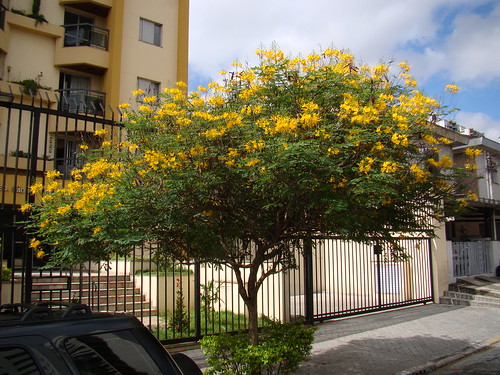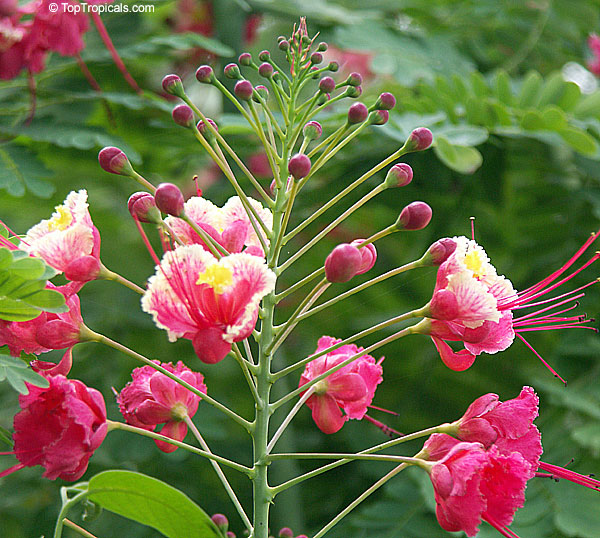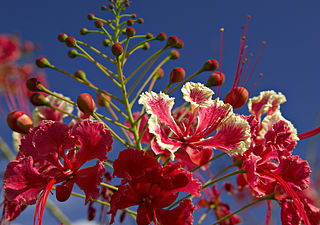 |
| Photo Mine |
This is along Hwy 76 in Pauma Valley just down the road west of the Pauma Casino and heading towards the Pala Reservation Casino. I believe this is on the property of the old Pauma General Store which would be to the right in the photograph. Lots of traffic and the pic was hard to get with masses of automobiles traveling in both directions. where in the world do people in this lousy economy get money to blow like that ? Anyways, here is the roadside informal hedge of the (Caesalpinia gilliesii)
 |
| Photo: Mine |
This is taken from the west bound lane of Hwy 67 before coming into Ramona. It was just one too many times that I passed here back and forth on missions east and north that I then just had to stop and photograph this wonderful South American native. Just about the only water it receives is from the poor annual rainfalls of late.
 |
| Photo: Mine |
Here is the frontal view of the roadside plants on a picture post card property most will recognize when passing the old Hi-Way Market on Hwy 67 on way to Santa Ysabel or Julian. Very tough little shrub and good selection for dry hot areas. also I like the way it doesn't become an invasive and take over the wild, although I have seen it naturalize by reseeding.
 |
| Photo image: Mauro Guanandi São Paulo Brazil neighbourhood Caesalpinia mexicana |
 |
| Top Tropicals Caesalpinia 'Rosae Pink' |
 |
| The Tucson Murals Project |
 |
| Image from AAA Landscapes |
 |
| Wikipedia Caesalpinia pulcherrima Guadeloupe |
 |
| Wikipedia Caesalpinia pulcherrima Guyanese flower |
There is just so many kool varieties of things and it's simply a matter of being in the right place and at the right time for discovery and perhaps collecting the seed or cloning from cuttings. I'm glad there are folks out there with the patience for doing such things with a species of plant with which they specialize. Again, I just don't have that type of patience. I sure wish I did though. This world has everyone keyed up and anxious. Stress is everywhere, but the garden is certainly a way of escape. At least that's always the way it was for me. And I suppose still is. Outdoors and discovery though are even better. Still, maybe some have seen some things here they never knew existed as far as availability.
 |
| Image by Maryory Strap - Pinterest |
 |
| Image from www.floresefolhagens.com.br 'Royal Poinciana' |
Other Posts on this subject.
Utilizing Ornamentals of the Legume Family in Southwest Landscapes
I have the yellow-flowered one and believe me, those things come up ALL OVER the yard! I have to weed them out... They are great growers here in the desert.
ReplyDelete~~Cheryl Ann~~
LOL, I can imagine. Well, they are from South America after all.
DeleteBeing a midwesterner, I'm not familiar with Caesalpinias - very nice shrub.
ReplyDeleteThe Poincianna tree is absolutely gorgeous. 45 degrees here is downright balmy-feeling sometimes after a long midwestern winter! ;)
I love almost everything about them. Although you can use too many. They are great for inserting into areas of the landscape as an attraction or location that needs colour
Delete